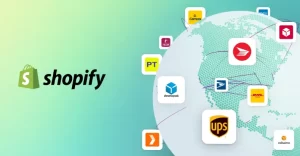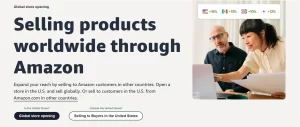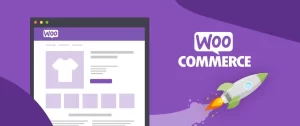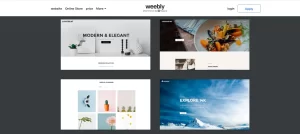If you want to do business globally, choosing the right platform is absolutely crucial. In today’s cross-border eCommerce landscape, it’s really a “race to the top.” If you don’t handle a platform well, you could end up not selling anything, losing money, having your account banned, or wasting time. So today, let’s talk about the Top 10 international eCommerce platforms, but not in a vague “they’re all good” way. Instead, we’ll focus on which platform is suitable for what kind of seller, the potential pitfalls, and the advantages of each one.
Why Choose an International eCommerce Platform
In one sentence: Riding on the shoulders of a platform to go global is way more reliable than going it alone.
What can an international platform offer you?
Multilingual support: Don’t speak French? No worries — the platform translates your product pages for you.
Local payment and logistics services: Like Klarna or Afterpay — popular installment options in Europe are fully supported.
Automatic tax and duty calculation: No more scaring off customers with unexpected fees.
Localized marketing tools: Set product prices, descriptions, and promotions tailored to each country.
SEO and social media tools: Boost your visibility in local markets without hiring a whole team.
Compliance protection: From GDPR to HIPAA, the platform helps handle the legal side of things.
These features free you up to focus on your products and customers — not get bogged down in tech and admin headaches.
Top 10 Recommended International E-Commerce Platforms Shopify
Shopify

Best For: Beginners, DTC brands, and independent store owners
I see Shopify as the ultimate e-commerce engine built for everyone. It’s a fully hosted, cloud-based solution that lets you launch a professional online store in just a few steps. You can sell to over 175 countries and accept 100+ major payment methods. It automatically handles orders, inventory, and taxes, and the built-in dashboard gives you clear insights into where your visitors are coming from and how your sales are doing.
Plus, with its huge ecosystem of third-party apps, almost any marketing or operational pain point can be solved with a plugin. In short, if you want to focus on selling and skip the tech headaches, Shopify has your back.
Pros
Supports multiple languages and currencies
Rich plugin ecosystem (e.g. auto currency conversion, auto translation, logistics integration)
Super quick to set up — no coding needed
Easily connects to TikTok, Instagram, and Facebook for direct selling
Note: You’ll need to drive your own traffic — unlike Amazon, Shopify doesn’t come with a built-in audience.
BigCommerce

Best For: Mid-sized businesses and sellers with complex SKUs
BigCommerce is an excellent platform for fast-growing and scaling businesses. It charges zero transaction fees, which means you get to keep more of your profits. It also supports multi-channel selling, so you can list your products on platforms like Amazon, eBay, and Facebook with ease — boosting both exposure and sales potential.
You get full control over the look and functionality of your store to reflect your brand identity, while the backend automates tedious tasks like order processing, payments, inventory, and taxes. On top of that, BigCommerce comes with powerful SEO tools and analytics, making it easier to attract customers and refine your strategy.
Pros
0% transaction fees: More money in your pocket, higher profit margins
Multi-channel sales: Sync and sell on Amazon, eBay, Facebook, etc. with one click
Strong SKU management: Great for stores with large or complex product catalogs
Backend automation: Orders, inventory, and taxes are handled for you
Built-in SEO and analytics: Drive organic traffic and optimize performance
Amazon Global Selling

Best For: Factory-based sellers with inventory, profit margin, and stable supply
Amazon operates across more than a dozen marketplaces worldwide — including the US, Japan, Germany, UK, France, Canada, Mexico, and Australia. With just one seller account, you can choose which country to sell in and expand globally with ease.
The Amazon US marketplace alone has over 200 million monthly active users, including more than 170 million Prime members. These buyers are known for being loyal and less price-sensitive — they search, click, and buy without shopping around much.
Take a typical product like a privacy fence screen:
If you’re selling on your own website, you’d have to spend big on ads, content creation, and social media just to get some traffic.
On Amazon, once you get your keywords and ads right, you can start getting sales as soon as the next day. If your product hits the right demand, you don’t need to invest heavily in marketing or SEO like you would with an independent store.
With FBA (Fulfilled by Amazon), all you need to do is send your inventory to Amazon’s warehouse — they’ll handle the rest:
Order processing (pickup, shipping, returns)
Customer service (handled by Amazon)
Packaging (uniform and professional)
Prime eligibility (boosts customer trust)
Pros
Built-in massive traffic: Especially on the US site — high exposure, fast conversions
FBA = low hassle logistics: Amazon takes care of storage, delivery, and after-sales
Mature payout systems: Supports Payoneer, LianLian, WorldFirst, etc., with stable payout cycles
High trust factor: Buyers trust the Amazon platform, increasing your order rate
Multi-market expansion: Manage all international marketplaces with one system — scale globally fast
Adobe Commerce (Magento)

Best For: Large brands, eCommerce teams, and businesses with strong IT resources
Magento is an open-source eCommerce platform launched in 2007 and acquired by Adobe in 2018, which led to the creation of its enterprise-grade version — Adobe Commerce. It enables businesses to launch and scale online operations with a high level of customization and a wide range of third-party extensions.
As of 2025, over 95,000 online stores worldwide run on Magento, with nearly one-third based in the U.S. Well-known brands like Carhartt and Manolo Blahnik use the open-source version, while Coca-Cola, Nissan, and Lenovo rely on Adobe Commerce for their digital transformation.
Pros
Highly customizable: Open-source platform allows deep customization
Extremely scalable: Supports a wide range of extensions and advanced features
Multi-language & multi-currency support: Ideal for cross-border eCommerce
Enterprise-level performance: Optimized for large traffic and complex operations
WooCommerce

Best For: Small to mid-sized sellers with an existing WordPress website
If you already have a blog or content site, using WooCommerce to add eCommerce functionality is a natural next step. It offers a wide range of plugins and high flexibility but requires some technical know-how.
In simple terms, it’s a tool that turns your WordPress site into an online store. Once you install WooCommerce, you can sell products, manage inventory, set shipping rates, process payments, and handle shipping directly from your website.
Supports physical products (e.g., clothing, books, electronics)
Digital products (e.g., online courses, services, memberships)
Downloadable products (e.g., eBooks, music, software)
Pros
Completely free: Core features are free, ideal for building a basic online store
Seamless WordPress integration: Perfect for users who already have a WordPress site
High flexibility: Many plugins available, allowing for easy customization
Multi-language & multi-currency support: Supports cross-border eCommerce, with extendable plugins
SEO-friendly: Compatible with SEO plugins like Yoast and Rank Math to boost product visibility
Wix

Best For: Designer brands, niche creative product sellers, and custom product businesses
Wix is indeed a powerful, code-free website builder that allows anyone to easily create a website, whether it’s a personal blog or a fully-fledged online business. With its drag-and-drop interface, Wix enables users to focus on design and content without needing any coding knowledge.
The platform’s built-in tools for eCommerce, marketing, scheduling, and brand management make it stand out in the world of business website creation. Wix supports everything from building an online store and processing payments to managing customer interactions. Its AI-powered website creation tool, Wix ADI, is also a highlight, automatically generating websites based on a few simple questions, making the website building process even easier.
Pros
No coding required: Drag-and-drop design, suitable for all users
Rich templates: A wide variety of customizable templates to suit different needs
Built-in eCommerce features: Supports online stores and payment processing
Squarespace

Best For: Independent creators and lifestyle brands
Squarespace is an all-in-one platform for website building, content management, and eCommerce, especially suited for sellers who prioritize brand image and visual presentation. Its main features include:
- High-quality design templates: Offers various stunning templates perfect for showcasing art, photography, handmade goods, and more.
- Integrated eCommerce features: Supports basic eCommerce functions like product display, shopping cart, and order management.
- Content Management System (CMS): Built-in tools for managing blogs, videos, audio, and more, making it easy for creators to showcase their work and stories.
- SEO and marketing tools: Provides basic SEO settings and marketing tools to help boost site visibility.
- Mobile optimization: All templates are optimized to ensure great display on mobile and tablet devices.
However, Squarespace’s eCommerce features are relatively basic, best suited for sellers with a small product range and sales volume. If your business requires advanced inventory management, multi-channel selling, or more sophisticated marketing features, you may need to consider other platforms.
Pros
- Strong design appeal: Beautiful templates ideal for high-end brands and creative industries, providing excellent brand image-building.
- Easy to use: Drag-and-drop editor, no coding knowledge needed to quickly build your site.
- Content-driven: Powerful content management system built-in, perfect for creators to tell stories and build brand culture.
- All-in-one service: Includes domain, hosting, eCommerce tools, and blog functionality, making it hassle-free.
Shift4Shop

Best For: Tech-savvy sellers who want full control over their store
Shift4Shop is perfect for sellers who want complete control over their website and are budget-conscious. Similar to BigCommerce, it offers a feature-rich and flexible platform, but with a key difference: Shift4Shop provides a completely free basic version, and if you use their payment system (Shift4 Payments), you can even save on monthly fees.
On the technical side, it supports custom code, SEO settings, and offers extensive API integrations, making it a great choice for developers. Built-in features like customer segmentation, promotions, blogs, and B2B pricing are also included.
Note: It may not be ideal for beginner sellers, as some development experience is needed to fully unlock its potential.
Pros
Free basic version (monthly fee waived if using their own payment system)
Feature-rich with built-in support for B2B, promotions, blogs, customer segmentation, and more
Supports custom code and extensive APIs, developer-friendly
Optimized SEO settings, beneficial for natural traffic growth
Salesforce Commerce Cloud

Best For: Global brands with annual e-commerce revenues over ten million dollars
If Shopify is the starting point for e-commerce entrepreneurs, Salesforce Commerce Cloud is the ultimate platform for big players. Major global brands like PUMA and ASICS, which generate millions in revenue annually, often use it. It’s not just an e-commerce platform but a full-scale digital experience system, integrating online and offline experiences, CRM, marketing automation, and AI-powered personalized recommendations to create a truly “personalized” shopping experience.
Its backend functionality is incredibly powerful, allowing you to manage multiple countries, currencies, and languages with ease. It can also seamlessly integrate with other Salesforce products (such as customer service and sales management systems), creating a massive data hub. However, with its extensive features comes a hefty price tag and a long implementation cycle, which is generally out of reach for small to medium-sized sellers. In simple terms, this is a system built for large enterprises that aim to build a global brand. Expensive, but stable and worth it.
Pros
Strong global support: Easy management of multiple languages, currencies, and sites
Omni-channel integration: Seamless operation across online, offline, apps, and official websites
AI-powered personalized experience: Smart recommendations and personalized marketing with a single click
Seamless integration with Salesforce ecosystem: Integrates CRM, customer service, and marketing tools, with strong data interlinking
Weebly

Best For: Small or new sellers just starting out
Pros: Fast and easy website building
Cons: Limited scalability, best for initial cross-border experimentation, not suitable for long-term large-scale operations.
Weebly is an all-in-one website builder, ideal for those who want to create a simple and quick website. Unlike other solutions that require purchasing, installing, and managing various components separately, Weebly provides a one-stop service where all features and designs seamlessly work together on the same platform, saving you from cumbersome tasks.
Think of using Weebly as renting and customizing an apartment in a high-quality residential area rather than buying and owning a house. You have full control over the design and content of your website, but the platform handles construction, infrastructure, and security, allowing you to focus on running the site without worrying about technical details.
Weebly offers an easy drag-and-drop design, making it simple to adjust the layout and content of your site, making it perfect for beginners and those needing to set up a website quickly. Overall, Weebly is suitable for users who want to find a balance between convenience and control.
Pros
All-in-one service: Provides a complete solution from domain to hosting, saving time and effort.
User-friendly: Drag-and-drop design, no coding required, ideal for beginners.
Integrated marketing tools: Includes SEO optimization and social media integration.
Reliable and secure: Offers stable hosting and SSL security certificates.
Weebly Pricing
| Plan | Personal | Professional | Performance |
|---|---|---|---|
| Price | $9.00/mo | $16.00/mo | $29.00/mo |
| Yearly Price (Discount) | $7.00/mo | $15.00/mo | $30.00/mo |
| Storage | Unlimited | Unlimited | Unlimited |
| Visitors/month | Unmetered | Unmetered | Unmetered |
In conclusion, selecting the right international e-commerce platform is crucial for success in cross-border sales. Each platform has its own strengths, catering to different business needs. Shopify and BigCommerce excel in flexibility and multi-channel selling, while Amazon provides vast traffic and efficient logistics.
For businesses with specific customization needs, Magento and WooCommerce are excellent choices. Squarespace and Wix are also ideal for niche markets focusing on strong branding. Choosing the right platform is essential for optimizing operations and effectively expanding your market.

 14 min read
14 min read
